Abstract
Exposure of etiolated pea (Pisum sativum L. var. Alaska) subapical sections to ethylene disrupts normal polar cell expansion, but fresh weight increase is little affected and the tissue expands radially, swelling. Ethylene has no effect on gross ribonucleic acid metabolism before or during the period when swelling occurs, but incorporation of 14C-proline and leucine into wall-associated protein is markedly inhibited after an initial 3-hour lag period which precedes swelling. Ethylene affects the composition of this protein, altering the proline-hydroxyproline ratio. The gas also alters the optical birefringence pattern of the cell wall, indicating that the cellulose microfibrillar orientation has been changed.
Full text
PDF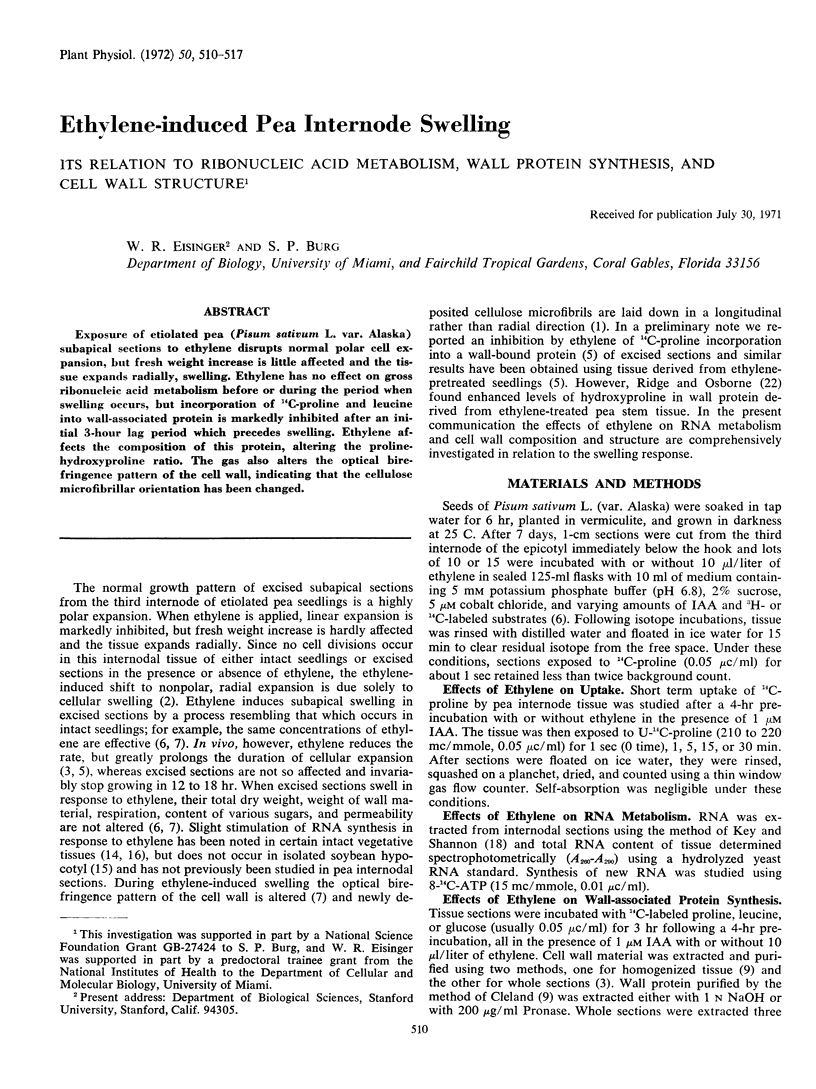
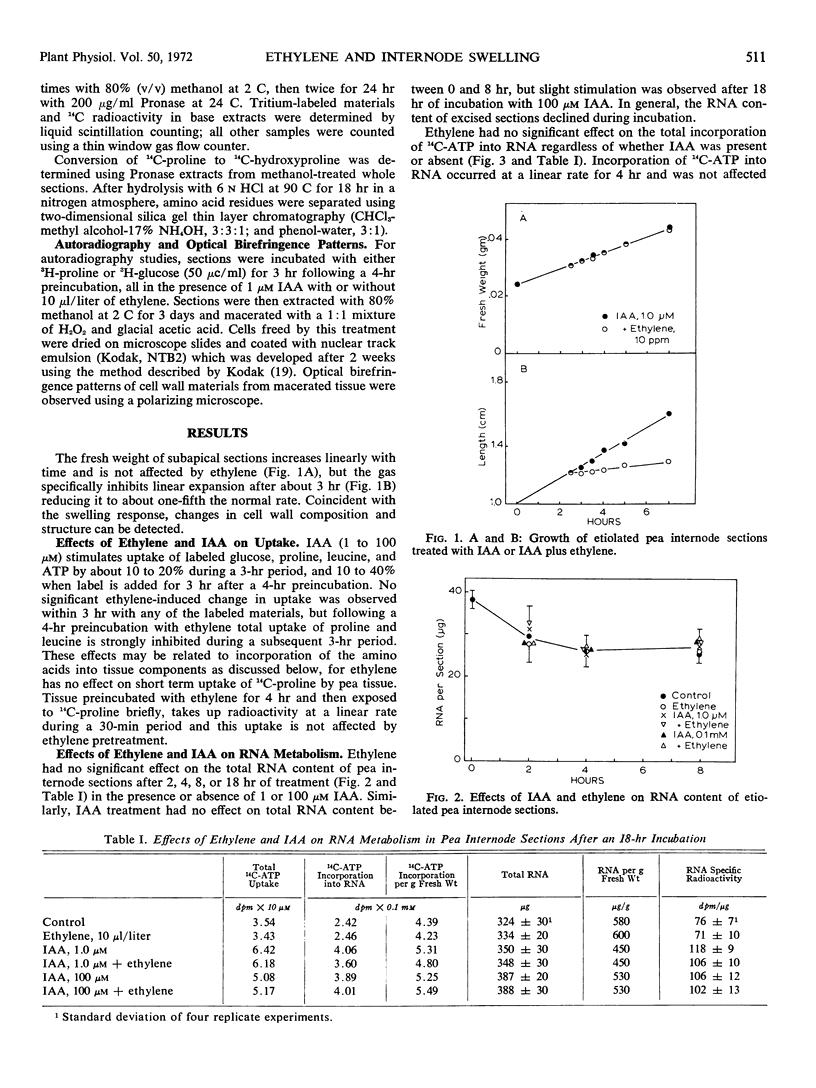
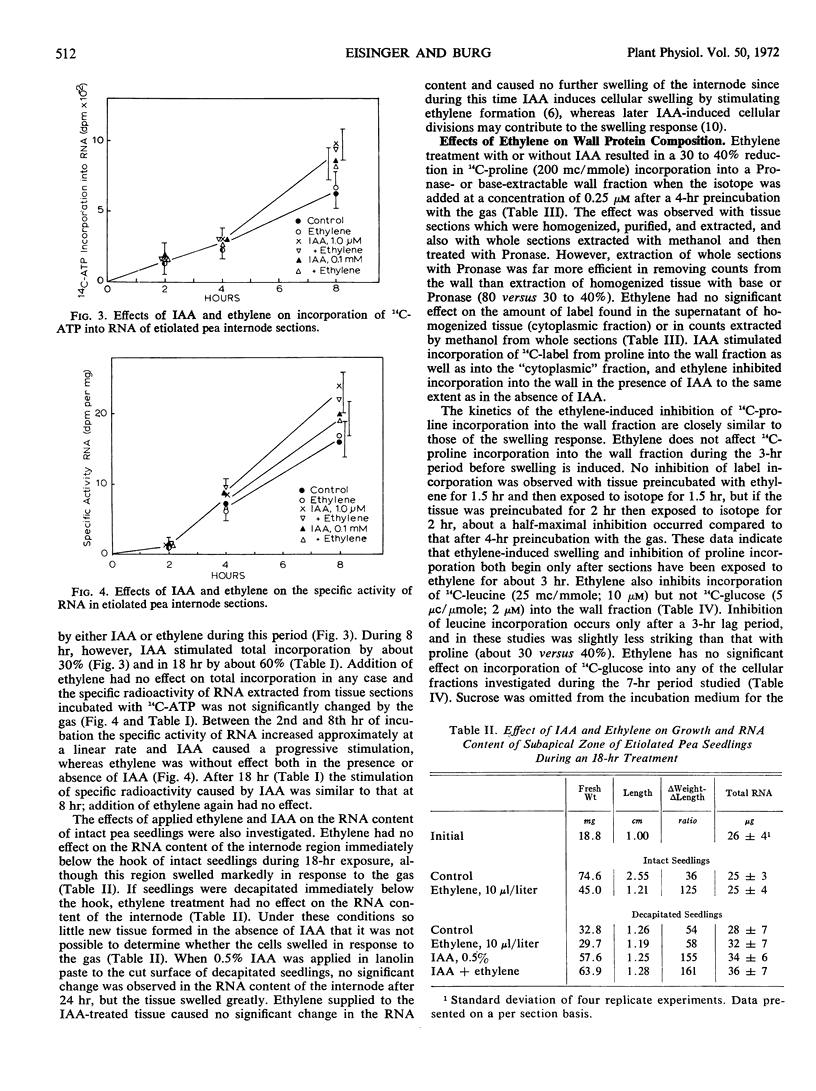

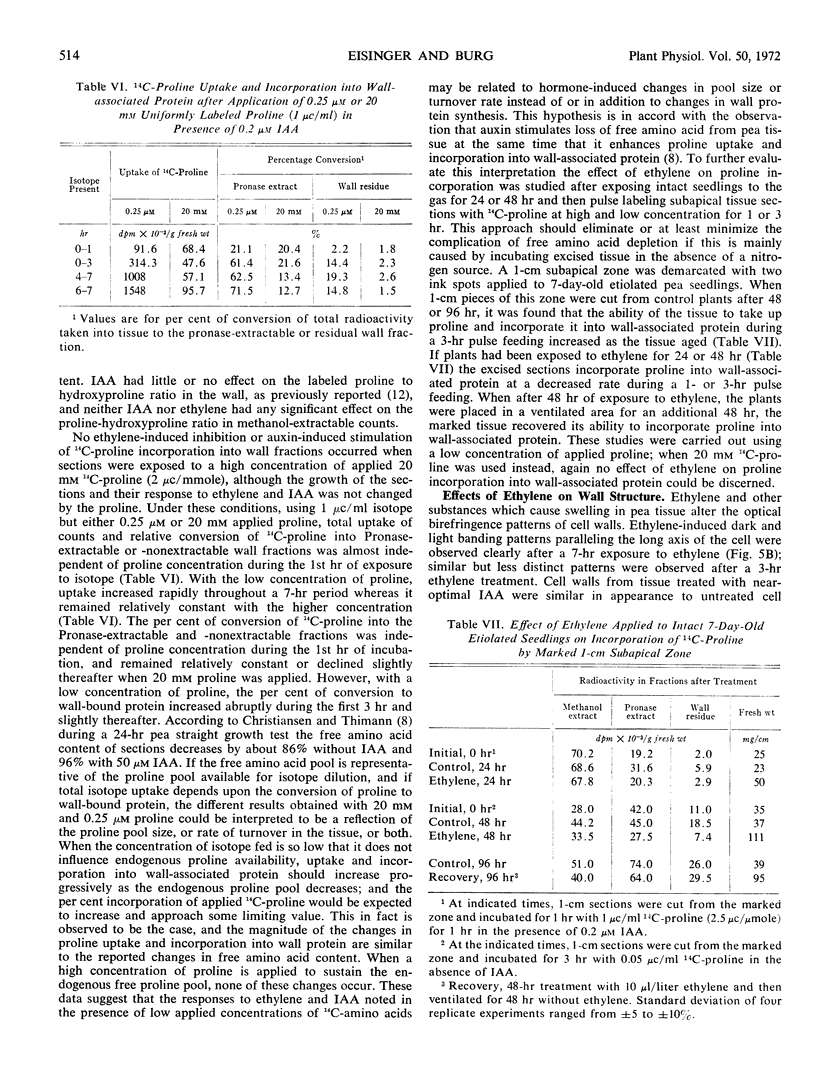
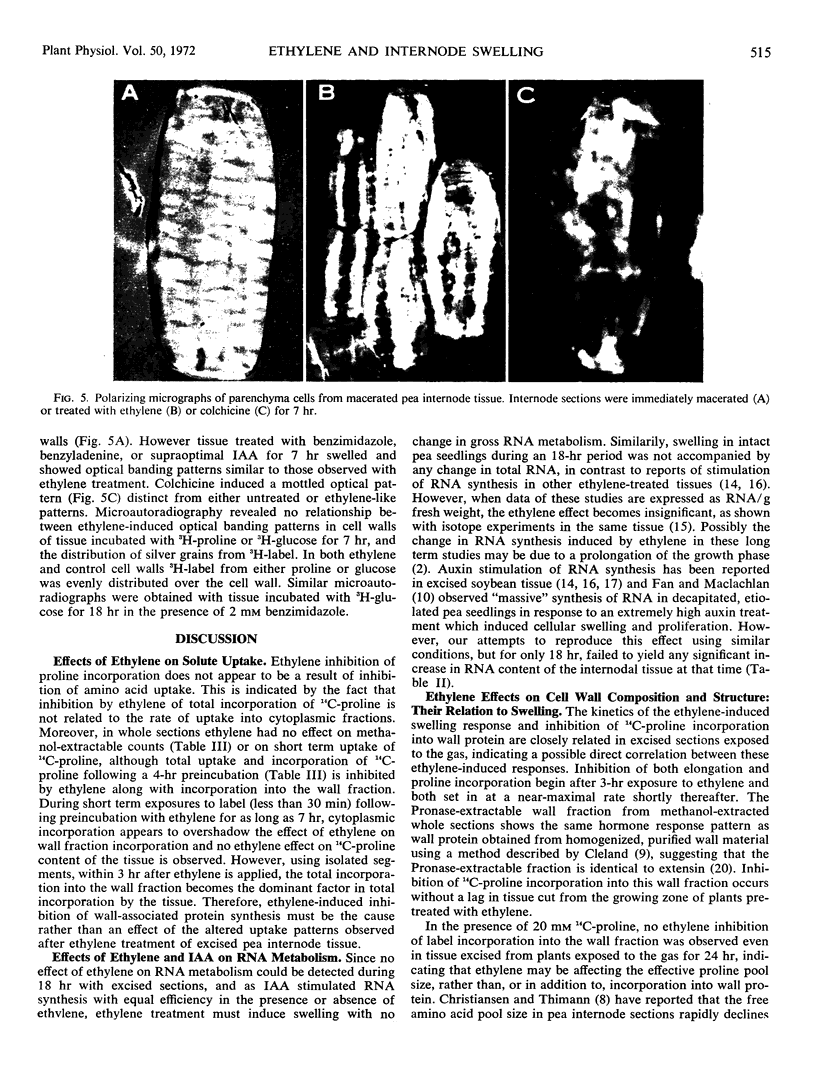
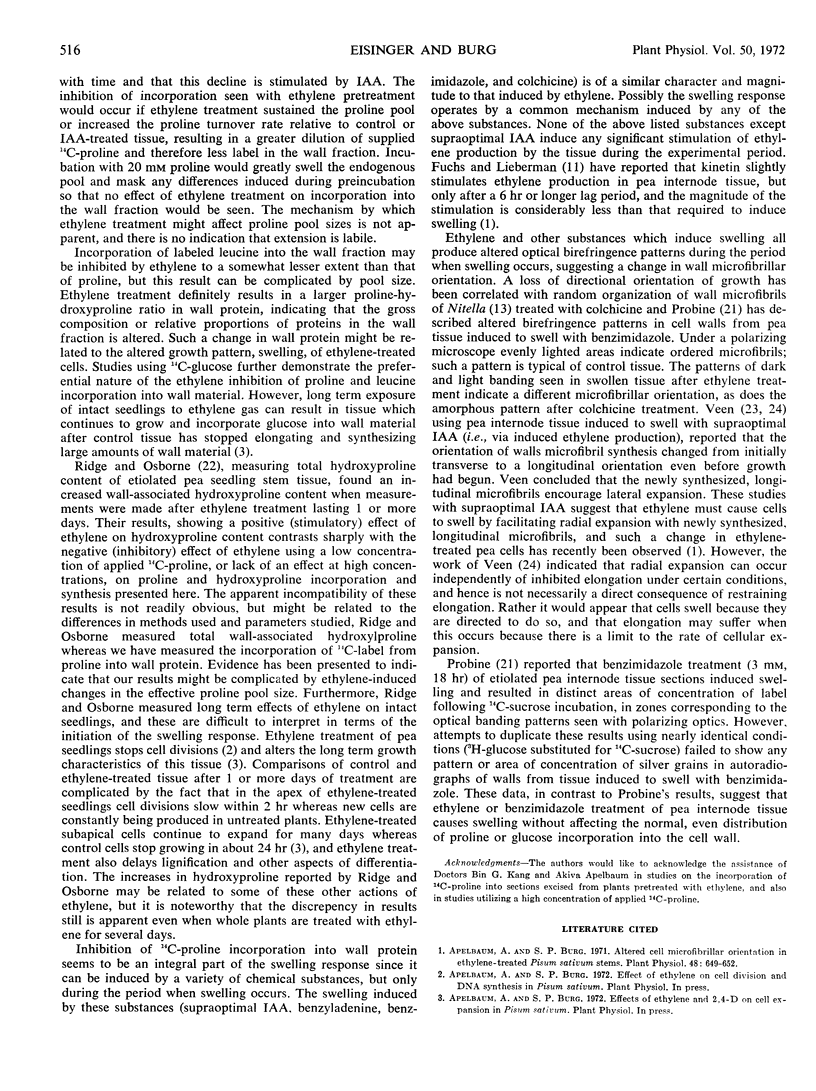
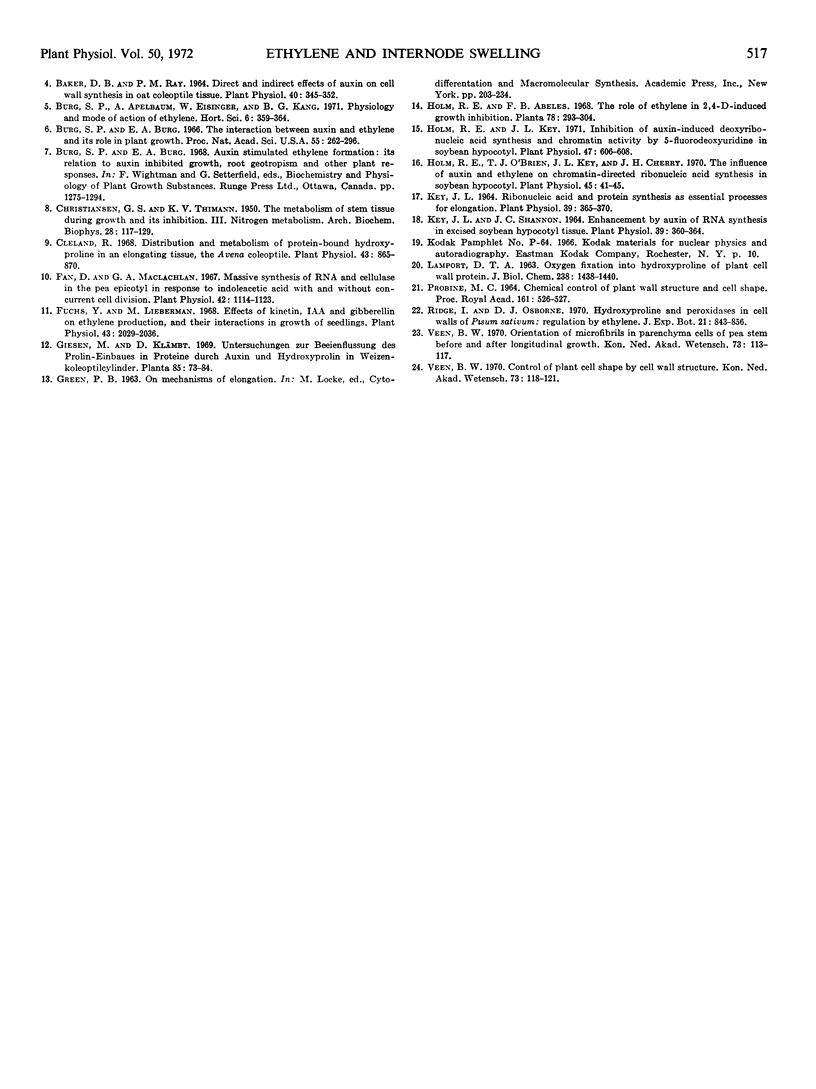
Images in this article
Selected References
These references are in PubMed. This may not be the complete list of references from this article.
- Apelbaum A., Burg S. P. Altered Cell Microfibrillar Orientation in Ethylene-treated Pisum sativum Stems. Plant Physiol. 1971 Nov;48(5):648–652. doi: 10.1104/pp.48.5.648. [DOI] [PMC free article] [PubMed] [Google Scholar]
- Baker D. B., Ray P. M. Direct and Indirect Effects of Auxin on Cell Wall Synthesis in Oat Coleoptile Tissue. Plant Physiol. 1965 Mar;40(2):345–352. doi: 10.1104/pp.40.2.345. [DOI] [PMC free article] [PubMed] [Google Scholar]
- Burg S. P., Burg E. A. The interaction between auxin and ethylene and its role in plant growth. Proc Natl Acad Sci U S A. 1966 Feb;55(2):262–269. doi: 10.1073/pnas.55.2.262. [DOI] [PMC free article] [PubMed] [Google Scholar]
- CHRISTIANSEN G. S., THIMANN K. V. The metabolism of stem tissue during growth and its inhibition. III. Nitrogen metabolism. Arch Biochem. 1950 Aug;28(1):117–129. [PubMed] [Google Scholar]
- Cleland R. Distribution and metabolism of protein-bound hydroxyproline in an elongating tissue, the Avena coleoptile. Plant Physiol. 1968 Jun;43(6):865–870. doi: 10.1104/pp.43.6.865. [DOI] [PMC free article] [PubMed] [Google Scholar]
- Fan D. F., Maclachlan G. A. Massive synthesis of ribonucleic Acid and cellulase in the pea epicotyl in response to indoleacetic Acid, with and without concurrent cell division. Plant Physiol. 1967 Aug;42(8):1114–1122. doi: 10.1104/pp.42.8.1114. [DOI] [PMC free article] [PubMed] [Google Scholar]
- Fuchs Y., Lieberman M. Effects of Kinetin, IAA, and Gibberellin on Ethylene Production, and Their Interactions in Growth of Seedlings. Plant Physiol. 1968 Dec;43(12):2029–2036. doi: 10.1104/pp.43.12.2029. [DOI] [PMC free article] [PubMed] [Google Scholar]
- Holm R. E., Key J. L. Inhibition of Auxin-induced Deoxyribonucleic Acid Synthesis and Chromatin Activity by 5-Fluorodeoxyuridine in Soybean Hypocotyl. Plant Physiol. 1971 May;47(5):606–608. doi: 10.1104/pp.47.5.606. [DOI] [PMC free article] [PubMed] [Google Scholar]
- Holm R. E., O'brien T. J., Key J. L., Cherry J. H. The Influence of Auxin and Ethylene on Chromatin-directed Ribonucleic Acid Synthesis in Soybean Hypocotyl. Plant Physiol. 1970 Jan;45(1):41–45. doi: 10.1104/pp.45.1.41. [DOI] [PMC free article] [PubMed] [Google Scholar]
- Key J. L. Ribonucleic Acid and Protein Synthesis as Essential Processes for Cell Elongation. Plant Physiol. 1964 May;39(3):365–370. doi: 10.1104/pp.39.3.365. [DOI] [PMC free article] [PubMed] [Google Scholar]
- Key J. L., Shannon J. C. Enhancement by Auxin of Ribonucleic Acid Synthesis in Excised Soybean Hypocotyl Tissue. Plant Physiol. 1964 May;39(3):360–364. doi: 10.1104/pp.39.3.360. [DOI] [PMC free article] [PubMed] [Google Scholar]
- LAMPORT D. T. Oxygen fixation into hydroxyproline of plant cell wall protein. J Biol Chem. 1963 Apr;238:1438–1440. [PubMed] [Google Scholar]



